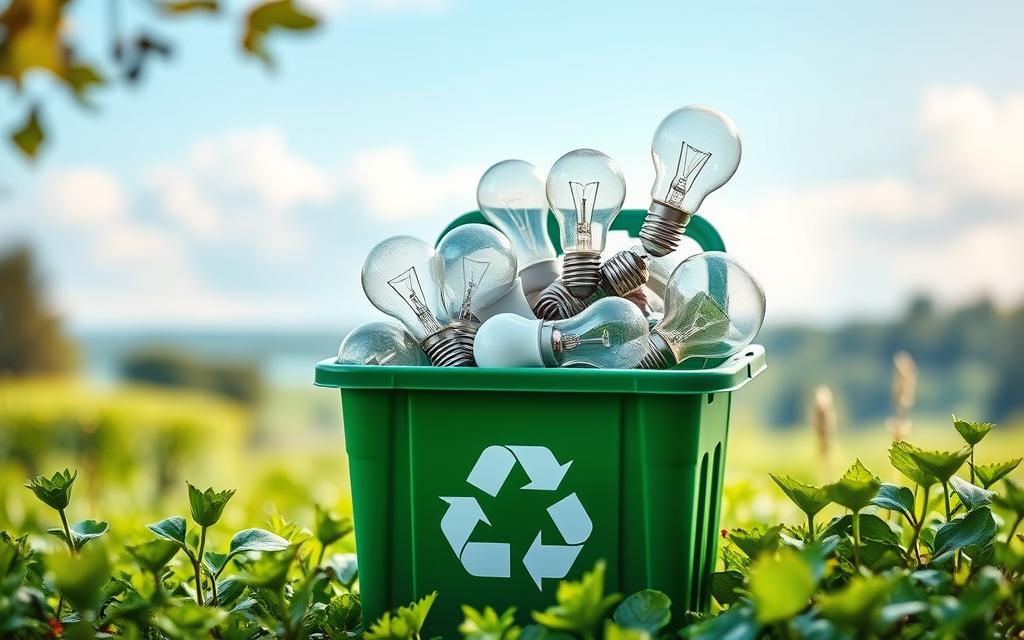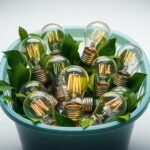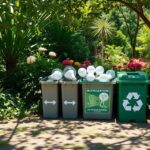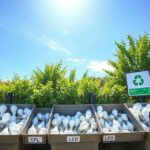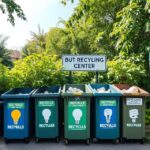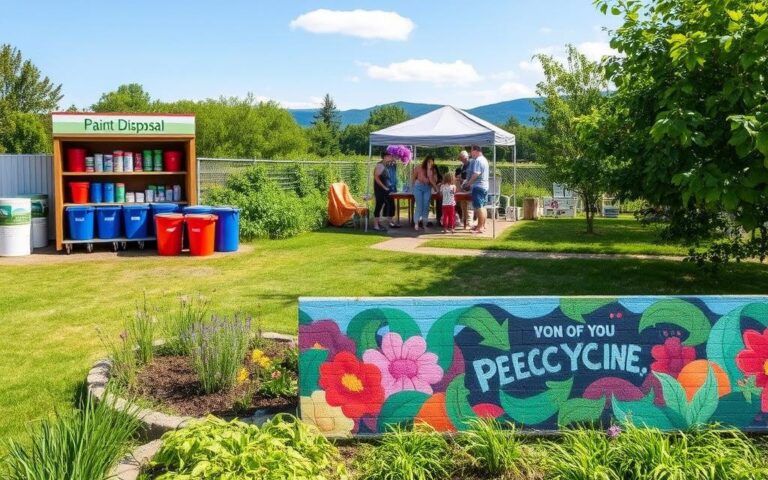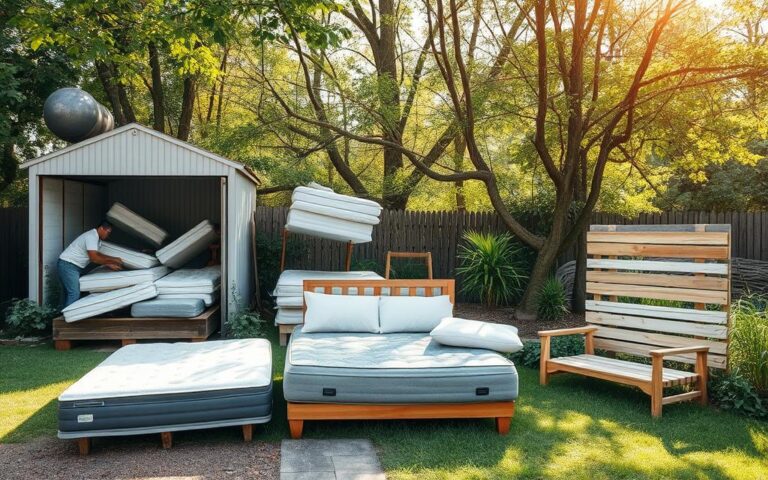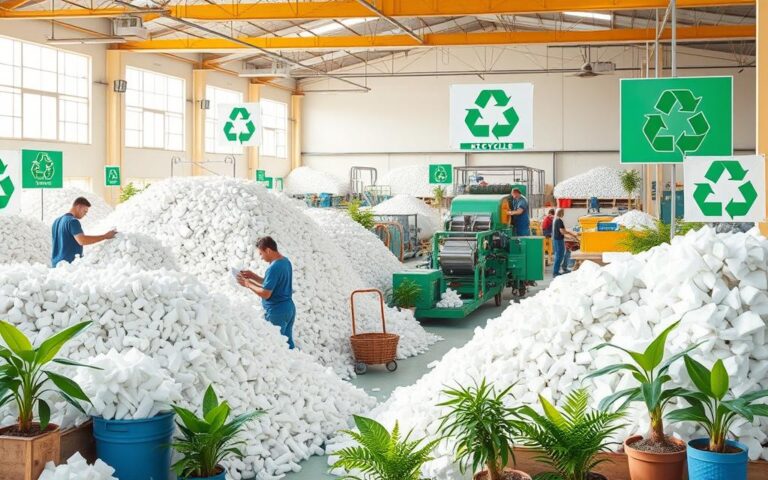Where to Recycle Light Bulbs Near Me? Eco-Friendly Options
Recycling light bulbs is key for sustainable living. Millions end up in landfills every year, which is bad for the planet. Products with mercury are especially harmful. It’s good to know where to recycle them responsibly. Many places like Home Depot, Lowe’s, and IKEA have programs for this.
Retailers play a big role in proper disposal and recycling. Did you know LED bulbs use up to 90% less energy than standard bulbs? Also, 95% of an LED bulb can be recycled. This makes them a great choice for those who care about the environment. Local recycling programs help us reduce waste and protect the Earth.
To learn how to recycle light bulbs properly, visit Home Depot’s guide to light. This will help keep our environment clean and green.
Why Is It Important to Recycle Light Bulbs?
Recycling light bulbs helps protect our environment. If we throw them away carelessly, toxic substances can leak into the earth and our water. We all can play a part in keeping our planet healthy by recycling. This way, we benefit from a cleaner and safer environment.
Environmental Impact of Improper Disposal
Dumping light bulbs in landfills is dangerous. Especially CFLs and fluorescent tubes, since they have mercury. If these bulbs break, mercury gets into our water, endangering people and animals. One single CFL can ruin up to 6,000 gallons of water. Therefore, disposing of light bulbs correctly is crucial. Also, with landfills filling up, we must be careful not to add harmful materials to them.
Sourcing Valuable Materials Through Recycling
Recycling light bulbs brings many benefits. It allows us to get back useful materials, like glass and metals, and save energy. For example, recycling aluminium uses 96% less energy than making new from scratch. Many shops that sell LEDs also take back old ones for recycling. This helps everyone and reduces the demand for new materials, lessening our environmental footprint.
| Light Bulb Type | Recyclability | Disposal Notes |
|---|---|---|
| Incandescent | Not recyclable | Should be disposed of with regular trash. |
| CFL | Recyclable | Do not throw away with regular trash; take to special collection events or retailers. |
| Fluorescent tubes | Recyclable | Must not be thrown away with regular trash; look for collection events. |
| LED | Recyclable | Should not be placed in curbside recycling; check for retailer programs. |
| Halogen | Recyclable | Recycling options may be limited; consult local recycling centres. |
How to Prepare Light Bulbs for Recycling
It’s vital to prepare light bulbs for recycling carefully. This ensures safety and helps the environment. You’ll need to take certain steps and use the right packaging for various bulb types.
Safety Precautions for Handling Used Bulbs
Handling used light bulbs requires care. Be sure to wear gloves to avoid cuts from broken glass. For CFL bulbs, which contain mercury, it’s crucial to seal them in airtight bags before disposal. This reduces the risk of mercury exposure. Should a bulb break, clean it up immediately with safety gear to handle hazardous waste safely.
Proper Packaging for Different Types of Bulbs
Different light bulbs need different recycling approaches. Wrap intact bulbs well to avoid breaking them during transport. For broken bulbs, you’ll need to clean up quickly and contain them safely to prevent harm. Knowing how each type should be handled helps protect the environment during recycling.
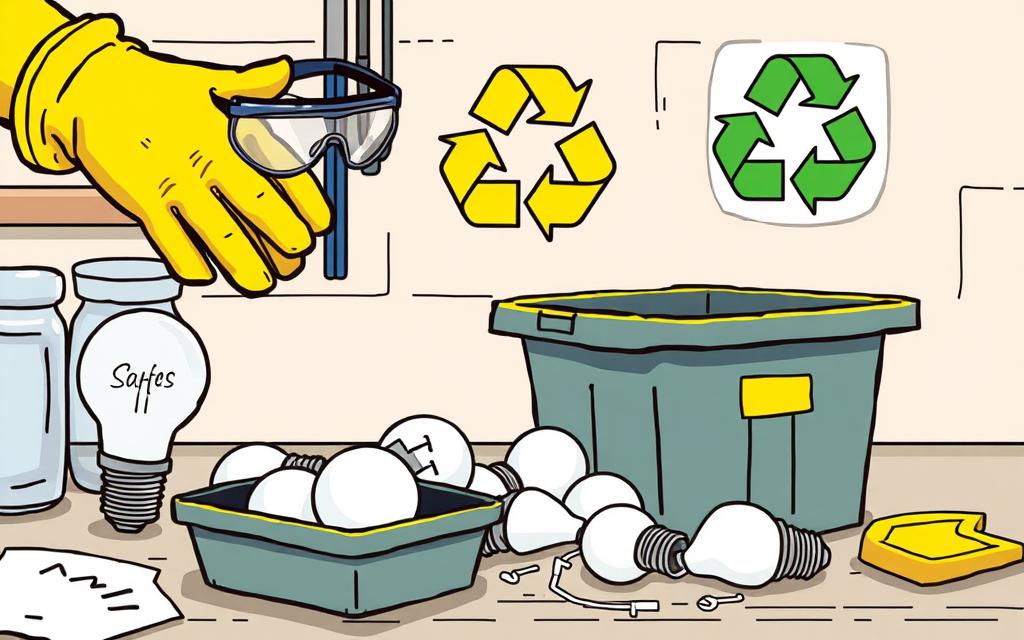
| Type of Bulb | Packaging Method | Hazardous Materials | Recycling Note |
|---|---|---|---|
| Incandescent | Wrap securely | No | Can dispose of in regular trash |
| CFL | Airtight bag | Mercury | Recycle at designated locations |
| LED | Suitable recycling packaging | Lead, Arsenic | Use retail recycling programmes |
| Fluorescent Tubes | Special containment | Mercury | Hazardous waste handling required |
| Halogen | Dispose in trash | No | Not easily recyclable |
Where to Recycle Light Bulbs Near Me
Looking for places to recycle light bulbs is important for our local surroundings. In many areas, there are special recycling centres set up. They teach people and help them get rid of hazardous stuff the right way. By joining in, you help with important community recycling programmes. These ensure safe handling and getting back useful materials.
Local Recycling Centres and Retailer Programmes
There are many spots for light bulb recycling, making it simple for people to do the right thing. Big stores like Home Depot and Lowe’s have easy return schemes for different kinds of bulbs. These programs let shoppers leave their old bulbs at the store. This makes local recycling smooth.
Also, lots of local recycling centres have special spots just for light bulbs. They take whole bulbs and recycle them properly, following rules. Always check your local waste rules before you go. This makes sure you’re doing it right and following the Mercury Management Act for mercury bulbs.
Municipal Hazardous Waste Facilities
For broken bulbs, which are harmful waste, there are special municipal waste places. These spots are safe for getting rid of dangerous bulbs. Cities often have specific days to bring your used bulbs for safe throwing away.
The table below shows different places for recycling light bulbs:
| Recycling Location | Address | Services Offered |
|---|---|---|
| Clean Earth | 2591 Mitchell Avenue, Allentown, PA | Universal waste services |
| TerraCycle Regulated Waste LLC | 2200 Ogden Avenue, Lisle, IL | Lamp recycling services |
| Bethlehem Lamp Recycling | Bethlehem, PA | Specialised lamp recycling |
| Cleanlites Recycling, Inc. | Mason Recycling Center, Mason, MI | Lamp recycling |
| Mercury Technologies of Minnesota, Inc. | Pine City, MN | Lamp recycling kits |
These recycling ways follow important safety rules and stop bad things from going to landfills. By knowing and using what’s out there, we all help the environment. We also support the circle of use and reuse, keeping our planet safe.
Types of Light Bulbs and Their Recycling Methods
Understanding different bulb types and their recycling is crucial for the planet. Each kind of light bulb has its own way of being recycled. This affects how green your recycling actions are. From getting rid of simple incandescent bulbs to recycling CFLs correctly, it makes a big difference to the environment.
Incandescent Bulbs
Incandescent bulbs are being replaced by more efficient ones but are generally safe for the bin. They pose little environmental danger but recycling is better for saving resources.
CFL and Fluorescent Tubes
CFLs and fluorescent tubes contain mercury, which is harmful to both health and the environment. Local laws often call for recycling CFLs to lessen these dangers. Make sure to use special recycling spots or store drop-offs for these bulbs.
LED Bulbs
LED bulbs lead in lighting technology, with features that are eco-friendly. They have metals that can be reused. The recycling process reduces waste. Stores like IKEA and Lowe’s have recycling bins for old LED bulbs, aiding in resource preservation.
Halogen Bulbs
Halogen bulbs are mainly made of glass and have complex parts, making recycling tricky. Usually, they go to general waste, but be sure to wrap them carefully. Yet, staying informed about their proper recycling practices helps maintain eco-friendly habits.
FAQ
Why is recycling light bulbs important?
Recycling light bulbs stops harmful materials like mercury from hurting our planet. It keeps toxic waste out of the soil and water. Plus, it allows us to reuse valuable materials such as glass and metals.
Where can I recycle my light bulbs?
Local recycling centres, stores like Home Depot and Lowe’s, and municipal hazardous waste facilities recycle light bulbs. Check with your local waste management to find out where and how.
How should I prepare light bulbs for recycling?
Wear gloves to protect your hands when handling light bulbs. Place CFLs and mercury-containing bulbs in airtight bags. Pack all bulbs carefully to avoid breakage and keep safety in mind, especially with broken ones.
What are the different types of light bulbs and their recycling methods?
Different light bulbs include incandescent, CFL, fluorescent tubes, LED, and halogen. Throw incandescent bulbs in your general waste. Yet, you must recycle CFLs and fluorescent tubes because of mercury. LEDs and halogens need recycling too, for environmental care.
What safety measures should I follow when disposing of light bulbs?
Handle light bulbs carefully, using gloves for protection. Bulbs with hazardous materials should be sealed in airtight bags. If a bulb breaks, clean it up safely to avoid dangerous exposure.
What role do retailers play in light bulb recycling?
Retailers like Home Depot and Lowe’s make recycling light bulbs easier by offering special bins. This helps people live more sustainably without much hassle.

